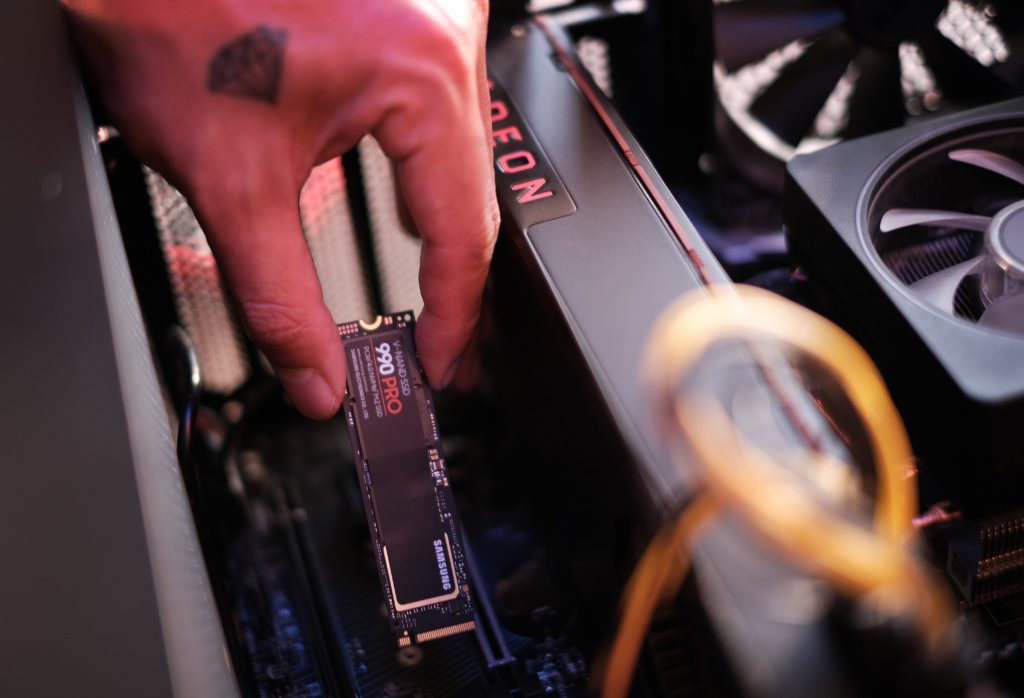Regarding computer hardware, few upgrades rival the impact of installing a Solid State Drive (SSD) on your system. SSDs have revolutionized computing by offering lightning-fast speed, enhanced reliability, and superior energy efficiency compared to traditional Hard Disk Drives (HDDs). In this blog post, we will describe why you should consider incorporating an SSD into your computer and provide a step-by-step guide for the installation process.

Why Should You Upgrade to an SSD?
- Speed and Responsiveness: SSDs are renowned for their remarkable read and write speeds. Unlike traditional HDDs, which rely on spinning disks for data access, SSDs utilize flash memory, resulting in almost instantaneous data retrieval and storage access. Consequently, your computer becomes considerably more responsive.
- Improved Boot Times: One of the most noticeable advantages of incorporating an SSD is the substantial reduction in boot times. Your computer can start up within seconds, allowing you to dive into work or leisure activities without the frustrating wait associated with HDDs.
- Enhanced Multitasking: SSDs excel at handling multiple tasks concurrently. Whether running resource-intensive applications, multitasking, or gaming, an SSD ensures your system operates smoothly, minimizing lag and load time.
- Durability and Reliability: SSDs lack moving parts, rendering them more resilient to physical shock and less susceptible to failure than HDDs. This heightened durability can extend the lifespan of your data and your computer.
- Energy Efficiency: SSDs consume less power than HDDs, resulting in extended laptop battery life and reduced electricity bills for desktop users. This eco-friendly aspect provides another compelling reason to make the transition.
- Quieter Operation: SSDs produce virtually no noise during operation since they lack spinning disks. You may also want to check our post about How to Get A Quieter PC.
Installing Your SSD
Incorporating an SSD into your computer is a relatively straightforward process. However, it is crucial to follow these steps carefully to ensure a seamless installation:
- Backup Your Data: Before making any hardware changes, ensure you have a current data backup. Although the risk of data loss during installation is minimal, it is always prudent to err on the side of caution.
- Select the Appropriate SSD: Determine the type and capacity that suits your requirements. SATA SSDs provide a cost-effective option for most users, while NVMe SSDs offer even faster speeds for demanding tasks. Ensure that your computer supports the chosen SSD type.
- Prepare Your Computer: Power down your computer, disconnect it from the power source, and ground yourself to prevent static discharge. For laptops, refer to your device’s manual for specific instructions.
- Install the SSD: In desktops, locate an available drive bay and connect the SSD using SATA data and power cables. For laptops, replace the existing drive or use an available M.2 slot. Follow your computer’s documentation for precise instructions.
- Clone or Perform a Fresh Install: Either clone your existing drive to the SSD or do a fresh installation of your operating system and applications. Cloning retains your current setup, while a fresh install ensures maximum performance gains.
- Designate the SSD as the Boot Drive: In your computer’s BIOS/UEFI settings, set the SSD as the primary boot drive to fully leverage its speed during startup.
- Update Firmware and Drivers: After installation, ensure that your SSD’s firmware is up to date and that you have the latest drivers installed for optimal performance.
Incorporating a Solid State Drive (SSD) into your computer is one of the most effective methods to breathe new life into it. The speed, responsiveness, and reliability enhancements are well worth the investment, regardless of whether you have a laptop or a desktop PC. Follow the installation steps meticulously, and soon, you will enjoy a faster and more efficient computing experience.
Don’t let your outdated hard drive hinder your productivity—get started with installing a solid state drive today! iFixYouri has SSDs for sale and we would be more than happy to do the install if this sounds too complicated to you.
